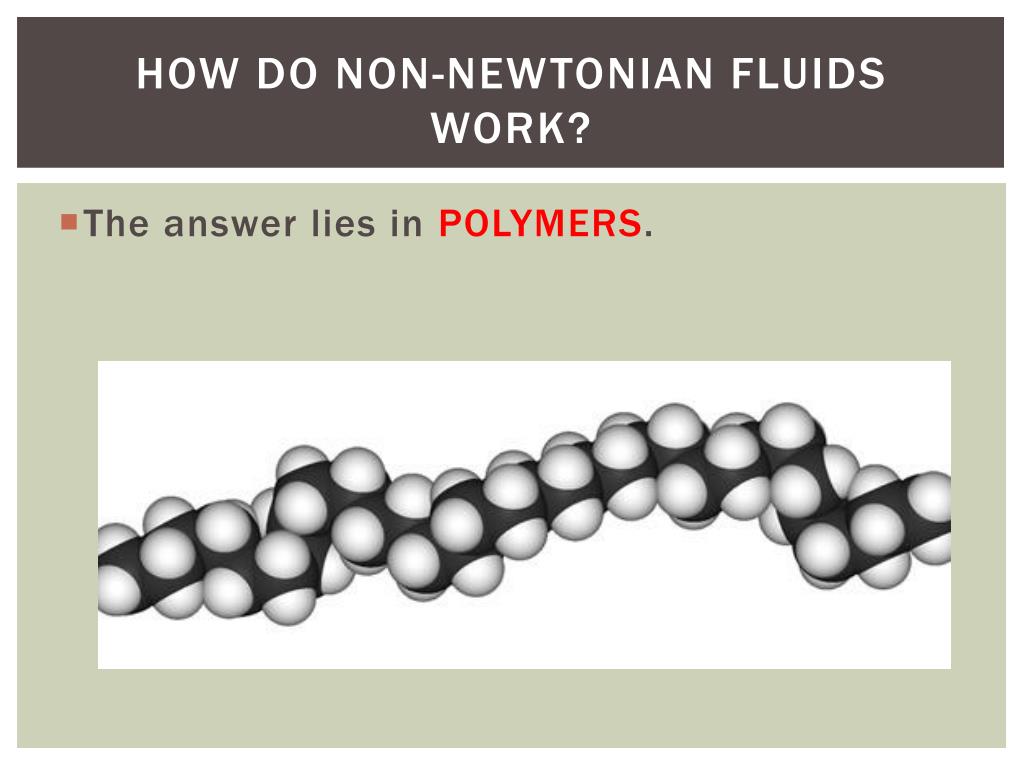

Newtonian fluid formula is expressed as τ=μ The shear rate is of course directly proportional to the fluid’s shear stress. The fluid is characterized by a zero shear rate in correlation with zero shear stress. The Newtonian fluid’s viscous stress that arises from the flow of the fluid closely correlates with its local strain rate. They are called Newtonian fluids for a reason, and that is because the fluids align with Newton’s viscosity law. Newtonian fluids are liquids or fluids with a constant viscosity that is not subject to change irrespective of the amount of pressure exerted on the fluid. Carefully go through the subsequent sections with rapt attention. Let’s find out what Newtonian and non-Newtonian fluids are and why they are both different. The underlying factor will also help differentiate fluids that are classified as Newtonian and those considered to be non-Newtonian. However, ascertaining the major factor that defines a Newtonian and non-Newtonian fluid will help classify these fluids properly. For example, water, alcohol, honey, gasoline, transmission fluid, brake fluid, etc., are various fluids that fall within these two categories. Classifying fluid types requires understanding the Newtonian Vs. If you need advice on how best to measure viscosity in your particular application, contact Saint Clair Systems. However, in many cases, a well-placed viscometer capable of imparting shear on the fluid is more than sufficient. If you’re working with a non-Newtonian fluid and need to measure its viscosity, you might need a rheometer. Non-Newtonian fluid viscosity can’t always be measured by everyday viscometers, though this is also dependent on what specific measurement you need. Amazingly, if you move quickly enough, you can walk across a pool filled with oobleck, as seen in this video. An example of a dilatant fluid is a suspension of corn flour dissolved in water, which creates a substance called oobleck. An example of a pseudoplastic fluid is ketchup (remember the last time you shook a ketchup bottle?).ĭilatant (shear thickening): In dilatant (also known as shear thickening) fluids, applied force increases viscosity, and much more quickly than with rheopectic fluids. Pseudoplastic (shear thinning): In pseudoplastic (also known as shear thinning) fluids, applied force decreases viscosity, and it does so on a much more immediate time scale than force applied to thixotropic fluids. An example of a rheopectic fluid is cream, as the more you stir it, the thicker it becomes - simply stirring it once does nothing. Rheopectic: In rheopectic fluids, force applied over time increases viscosity, or makes the fluid become thicker. An example of a thixotropic fluid is honey, as the more you stir it, the thinner it becomes. Thixotropic: In thixotropic fluids, force applied over time decreases viscosity, or makes the fluid become thinner. Non-Newtonian fluids come in a number of different types: thixotropic, rheopectic, pseudoplastic, and dilatant. The fluids that do behave according to Newton’s theory are known as Newtonian fluids, and include: Instead of changing viscosity according to temperature, they thicken or thin in response to the amount of force applied to them. These are aptly categorized as non-Newtonian fluids, and they have different properties than Newtonian fluids. There are a range of fluids that don’t behave according to his observations. The answer is that Newton only had half the picture. On the other hand, you can stir water endlessly and its thickness or thinness will never change - so what gives? Stirring your yogurt makes it less thick. If you’ve eaten yogurt recently, you know that this isn’t quite the case. In other words, Newton thought that no amount of stirring or similar actions would change the viscosity of a fluid. Newton’s observations led him to believe that a fluid’s viscosity was simply a function of shear stress and temperature - and that it would remain unchanged no matter the shear rate.

Newton, among his many well-known accomplishments (including the discovery of gravity), also discovered the basic principles of viscosity. Newtonian fluids and non-Newtonian fluids are so named because of physicist Sir Isaac Newton. Tracking viscosity is simple enough, but it gets more complicated when looking at the differences between Newtonian and non-Newtonian fluids - and these differences can affect how you approach your process. If you’re a manufacturer dealing with printing, painting, coating, or other finishing processes, you likely already understand just how important it is to be monitoring your fluid’s viscosity using a viscometer. This might seem like a commonsense idea, but there’s quite a bit of physics behind it - it sums up the difference between Newtonian and non-Newtonian fluids.


 0 kommentar(er)
0 kommentar(er)
